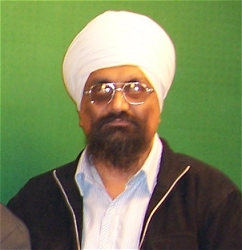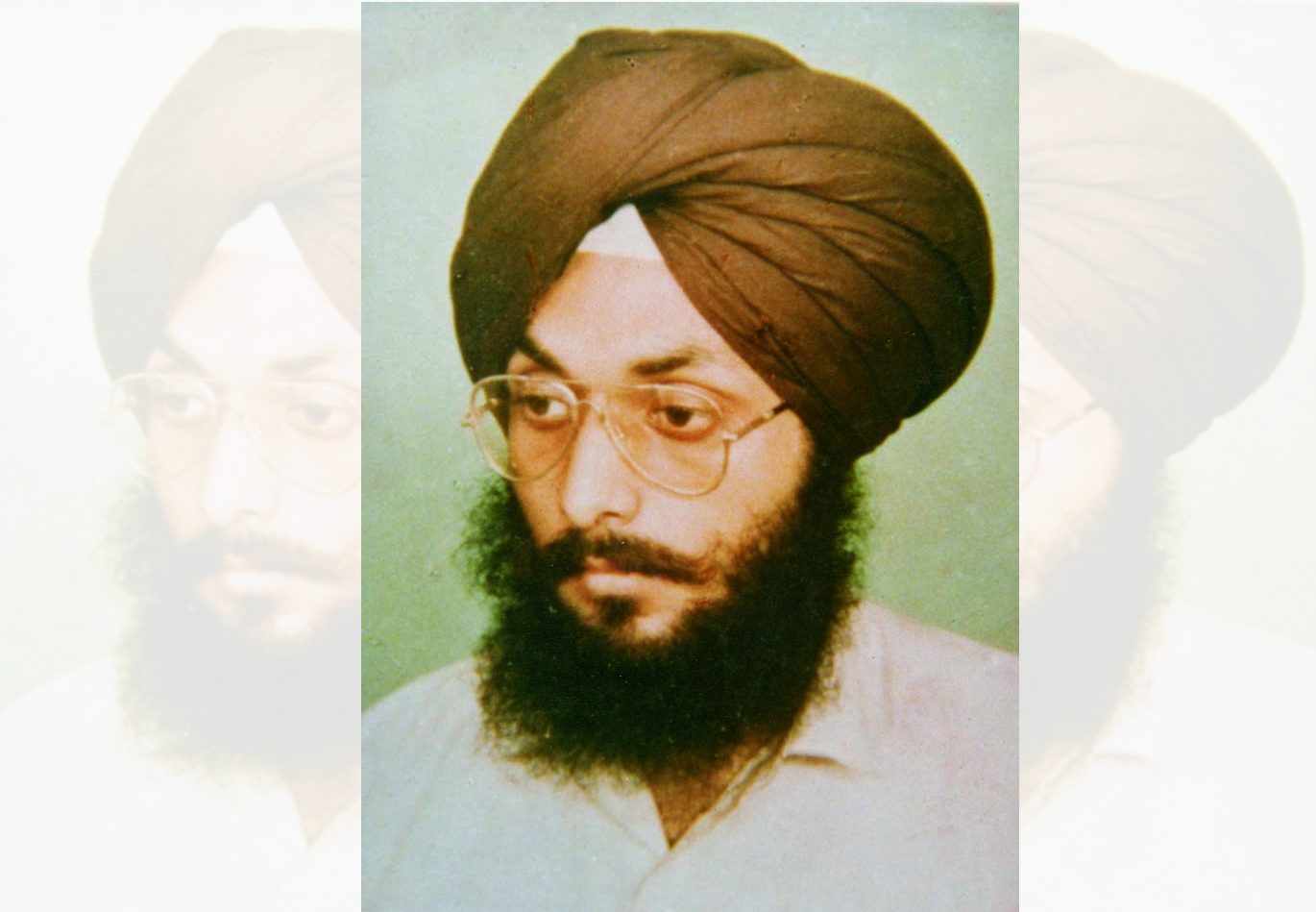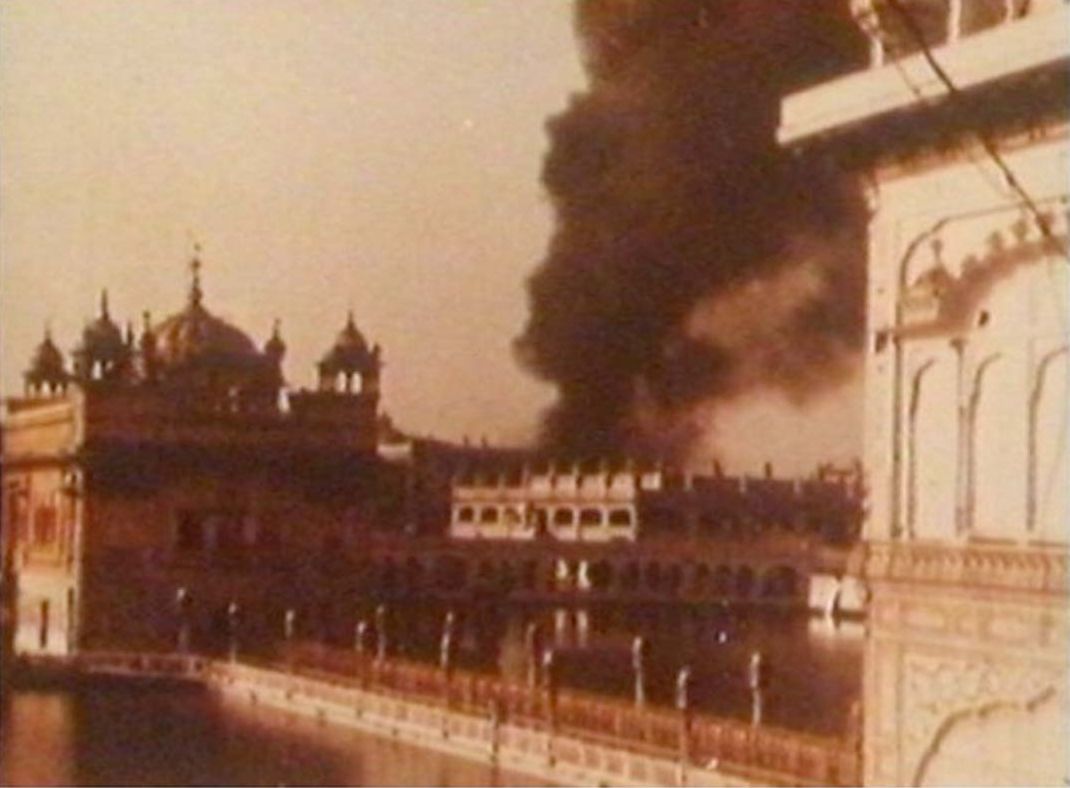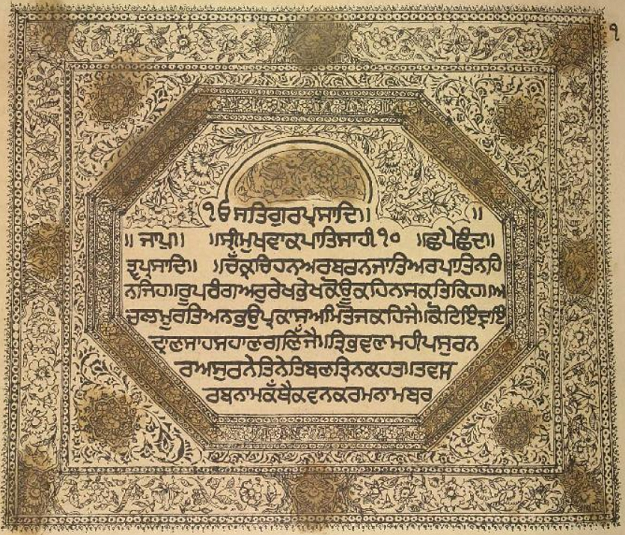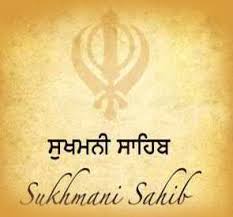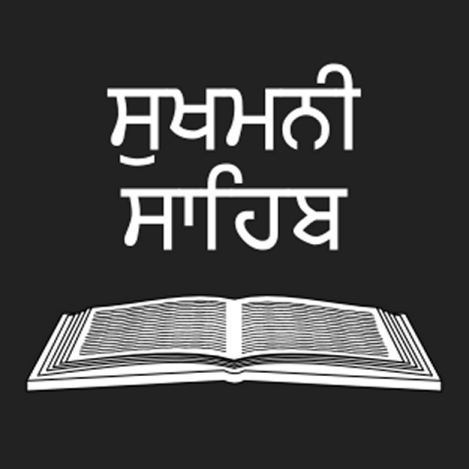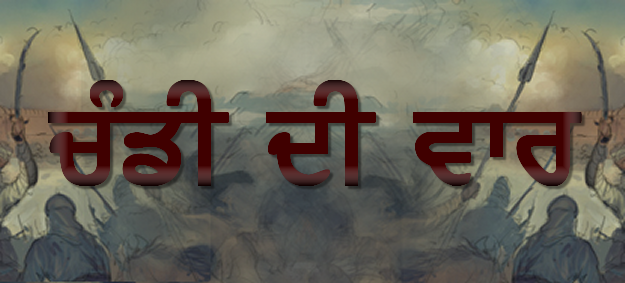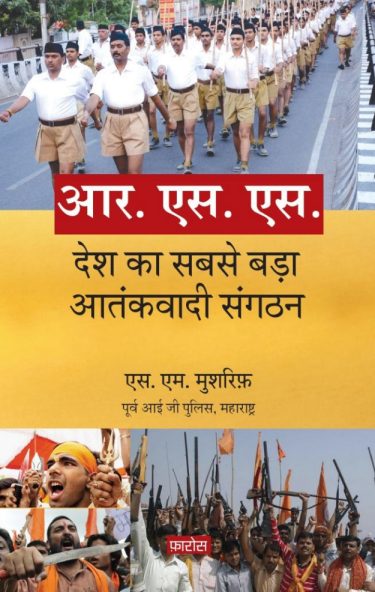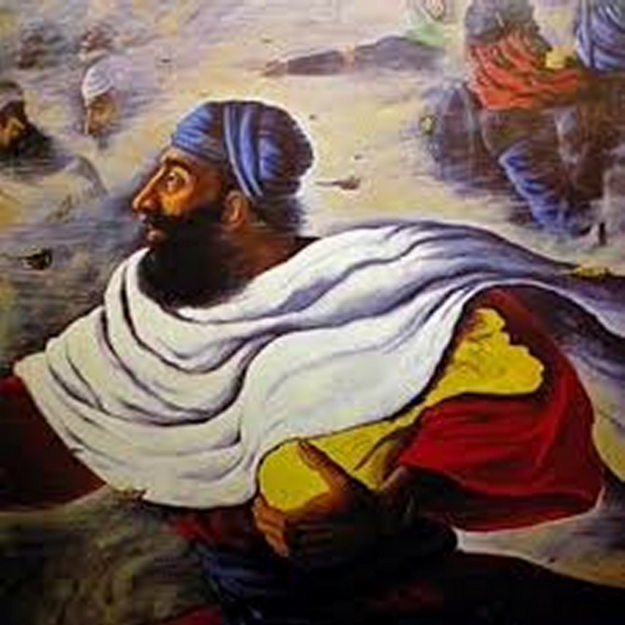
GURU TEGH BAHADUR, SAHIB (1621-1675), prophet and martyr, revered as the Ninth Guru or Revealer of the Sikh faith, was the youngest of the five sons of the Sixth Guru, Guru Hargobind Sahib Ji, and his wife, Mata Nanaki Ji.
He was born at Amritsar on Baisakh vadi 5,1678 Bikrami/1 April 1621. The early years of his life were spent in Amritsar where he was placed under the training of Bhai Buddha Ji and Bhai Gurdas JI, two of the most revered Sikhs of the time. The former taught him the manly arts of archery and horsemanship and the latter the religious texts. Another of the interests he cultivated was music. He was by nature of a contemplative and mystical temperament ---a strain which found expression in later years in poetry of deep spiritual insight and wisdom. At the age of 12, on 4 February 1633, he was married to Gujari Ji, daughter of Lal Chand and Bishan Kaur, Subhikkhi Khatris, of Lakhnaur, near Ambala, who had migrated and settled at Kartarpur.
After the accession in 1628 of Emperor Shah Jahan to the throne of delhi, conflict broke out with the Mughal authority. Amritsar itself became the centre of a skirmish. As Guru Hargobind Sahib left the city in 1634 to sojourn in southeastern Punjab, further clashes occurred at Mehraj (16 december 1634) and at Kartarpur (26 April 1635). Sikh texts record that (Guru) Tegh Bahadur Sahib Ji took part in the battle of Kartarpur and Sri Gur Pratap Suraj Granth especially pays homage to his skill and valour. After this battle, Guru Hargobind retired to Kiratpur, at the foot of shivalik hills. For (Guru) Tegh Bahadur Sahib Ji this meant nine years of uninterrupted bliss in the company of his father. After Guru Hargobind's death in 1644, he left Kiratpur with his mother, Mata Nanaki and wife, Gujari Ji, for Bakala, a village in Amritsar district, where Mata Nanaki's father had his ancestral home. (Guru) Tegh Bahadur Sahib Ji was now remote from the main seat of Sikhism. He lived a strict and holy life and spent most of his time in meditation. Yet he was no recluse. He went out riding and followed the chase.
From Bakala, Tegh Bahadur Sahib Ji made a visit to Kiratpur and thence set out, on 13 June 1656, on a prolonged tour towards the east. during his absence Guru Har Rai Ji, Guru Hargobind Sahib Ji's spiritual successor, passed away at Kiratpur transferring his mantle to his young son, Guru Har Krishan Sahib Ji. (Guru) Tegh Bahadur, who returned to delhi on 21 March 1664, called on Guru Har Krishan Sahib Ji, then in the city summoned by Emperor Aurangzib, to condole with him upon his father's death. Thereafter, he travelled on to Bakala. Soon after (Guru) Tegh Bahadur Sahib Ji had left delhi, Guru Har Krishan passed away alluding to him as his successor. However, the ambiguity of his words led to several claimants setting themselves up as Gurus at Bakala. (Guru) Tegh Bahadur Sahib Ji sat in the seclusion of his home, but was discovered by Makkhan Shah Lubana, a wealthy trader, who arrived at Bakala in search of the Guru. He walked from one street to another, paying obeisance and offering two gold mohars to each of the 'Gurus' he met, but obtained satisfaction from nowhere.
Finally, he repaired to the house where, he was told, lived a saintly being who made no claims for himself. This was (Guru) Tegh Bahadur Sahib Ji and, as Makkhan Shah bowed and placed in front of him the customary two gold mohars, he gave him his blessing, but said that his offering was considerably short of the five hundred gold coins he had promised when his cargo boat had been caught in a storm. Hearing these words, Makkhan Shah ran upstairs and began shouting from the housetop : "Guru ladho re, Guru ladho re (I have found the Guru, I have found the Guru)."
Makkhan Shah's announcement dispirited the impostors. Yet nothing could assuage the envy of dhir Mall, Guru Tegh Bahadur Sahib Ji's own nephew. His masand, Shihan, fanned his jealousy. dhir Mall's men attacked Guru Tegh Bahadur Sahib Ji's house and ransacked it as they willed. But the Guru remained calm. When Makkhan Shah retaliated and pillaged dhir Mall's house, he had everything retuned to him. He restored to dhir Mall goods plundered from his own house, including his copy of the holy volume, Granth Sahib, and to quote Santokh Singh Sri Gur Pratap Suraj Granth, counselled his Sikhs : "Forgiveness is the austerity most meritorious ; forgiveness is the best of charities. Forgiveness is equivalent to all the pilgrimages and ablutions. In forgiveness lies liberation. No other virtue parallels forgiveness. Forgiveness you must learn."
According to Bhatt Vahi Talauda Pargana Jind, Guru Tegh Bahadur Sahib Ji was formally annointed Guru on Bhadon Amavas 1721 Bk/ 11 August 1664. The responsibility of instructing the growing Sikh community and guiding its affairs was now his. He was the focal point of veneration for the Sikhs. They came singly and in batches to seek spiritual solace and instruction. By his teaching and practice, he moulded their religious and social conscience. Connection was established with far-flung sangats through masands and the Guru's edicts or commandments, called hukamnamas issued from time to time.
Three successive visits were made to Kiratpur. On 21 August 1664, Guru Tegh Bahadur Sahib Ji went there to condole with Bibi Rup Kaur upon the passing away of her father, Guru Har Rai Ji and of her brother, Guru Har Krishan Sahib Ji. The second visit was on 15 October 1664 at the death, on 29 September 1664, of Mata Bassi, mother of Guru Har Rai Sahib Ji. A third visit concluded a fairly extensive journey through Majha, Malva and Bangar districts of the Punjab. The first halt during this journey was at Amritsar, followed by those at Tarn Taran, Khadur Sahib and Goindval, all of longstanding sanctity in Sikh tradition.
Crossing the Beas and Sutlej rivers, Guru Tegh Bahadur Sahib Ji arrived in the Malva. He visited Zira, Moga and darauli and then sojourned in the Lakkhi Jungle, a desolate tract comprising mainly present-day districts of Bathinda and Faridkot. This journey took Guru Tegh Bahadur Sahib Ji up to dhamdhan, near Jind, from where he returned to Kiratpur. On 13 May 1665, he went to Bilaspur, farther, up in the hills to mourn for Raja dip Chand, the ruler of the state. The dowager Rani Champa of Bilaspur offered to give the Guru a piece of land in her state which the Guru bought on payment of. 500 rupees. Here on the mound of Makhoval, he raised a new habitation naming it Chakk Nanaki after his mother, Mata Nanaki Ji, which later became famous as Anandpur.
Like his predecessors since the days of Guru Hargobind Sahib Ji, Guru Tegh Bahadur Sahib Ji maintained the marks of worldly dignity, himself living austerely. He went on long journeys to instruct the sangats in different parts of the country and proclaim far and wide the message of Guru Nanak Sahib Ji. One such journey took him through towns such as Ropaṛ, Banuṛ and Rajpura to what is now Bahadurgaṛh, near Patiala, where the Muslim Nawab, Saif ud-din Mahmud, also known as Saif Khan, who had held office of governor of agra under Emperor Aurangzib, served him with devotion. Visiting on the way dhamtan, the seat of an old sangat, now under Bhai daggo, Guru Tegh Bahadur Sahib Ji reached delhi on 8 November 1665 where Rani Pushpa devi of amber was his host. Further journey lay through Mathura, agra, Etawah, Kanpur, Fatehpur, Allahabad, Mirzapur and Banaras. From Banaras he proceeded through Sasaram and Bodh Gaya to Patna where he left his family to go further east to meet sangats in the remoter districts. Here at Patna was born on 22 december 1666 his only son, Gobind Rai Ji (later Guru Gobind Singh Ji). Guru Tegh Bahadur Sahib Ji was at Monghyr when the news reached him. He continued his journey to dhaka, visiting on the way Bhagalpur, Sahibganj, Raj Mahal, Malda and Pabna. With dhaka as the centre, the Guru made trips to places such as Chittagong, Comilla, Sondip Island and Sylhet.
At dhaka, Raja Ram Singh of amber, an old disciple, who had been deputed on 6 January 1668 by Aurangzib to lead an expedition against the Ahoms of Assam, waited on Guru Tegh Bahadur Sahib Ji and sought his blessing. Towards the close of 1668, they together set out for Assam, crossed the Brahmputra and reached dhubṛi, which had also been visited by Guru Nanak Sahib during his travels in eastern India. Raja Ram Singh who was encamped at some distance from Guru Tegh Bahadur Sahib Ji clashed with the Ahom ruler, Chakradhvaj Singh. The issue remained undecided and, according to the Sikh chronicles, the Guru brought about peace between the warring forces. The homeward journey began late in 1669, the longest halt being at Patna where Guru Tegh Bahadur Sahib Ji rejoined his family and saw for the first time his son, Gobind das. He reached delhi on 20 June 1670, and put up in the dharamsala of Bhai Kalyana where disciples congregated in large numbers. Meanwhile Guru Tegh Bahadur Sahib Ji's son, Gobind Rai Ji, had reached Lakhnaur, his mother's ancestoral home near Ambala. Guru Tegh Bahadur Sahib Ji travelled from delhi to join the family. The family moved on to Chakk Nanaki, whereas Guru Tegh Bahadur Sahib Ji journeyed extensively across the Malva country before reaching there for the Baisakhi festival of 1672.
At Chakk Nanaki (Anandpur), a group of Kashmiri pandits, driven to desperation by the bigoted policies of the Mughal governor Iftikhar Khan (1671-75) called on Guru Tegh Bahadur Sahib Ji on 25 May 1675 to narrate their tale of woe. As Guru Tegh Bahadur Sahib Ji sat, rapt in thought, young Gobind Rai Ji, then barely nine, asked why he looked so deeply preoccupied. To quote Kuir Singh, Gurbilas Patshahi 10, "The Guru answered : Grave are the burdens the earth carries. She will be redeemed only if a truly worthy person comes forward to sacrifice his head."
"None could be worthier than yourself for such a noble act," remarked Gobind Rai Ji.
Guru Tegh Bahadur Sahib Ji was pleased to hear from his young son this brave answer and receive such spontaneous confirmation of his resolution to lay down his life to uphold the people's right to practise the religious creed they professed.
Resolved to court execution and ransom justice, Guru Tegh Bahadur Sahib Ji set out from Anandpur. Orders for his arrest were issued by Aurangzib as soon as he received reports of his declared intention. The common belief so far has been that the arrest was made at agra from where the Guru was taken to delhi under heavy escort. But recent researches based on the Bhatt Vahis maintain that the arrest took place at Malikpur Ranghṛan immediately after Guru Tegh Bahadur Sahib Ji had left Anandpur. The Malikpur arrest is corroborated by Muhammad Ehsan Ijad, a source quoted by William Irvine in his book Later Mughals and by a Sikh chronicler, Kesar Singh Chhibbar, in his Bansavalinama dasan Patshahian Ka. On the authority of Bhatt Vahi Multani Sindhi, Guru Tegh Bahadur Sahib Ji departed from Chakk Nanaki (Anandpur) on 11 July 1675. He had on 8 July 1675 nominated his son Gobind das as his spiritual successor and conferred on him the marks of Guruship. On 12 July he along with his Sikhs was taken into custody by Nur Muhammad Khan of the Ropaṛ police post at the village of Malikpur Ranghṛan, in Ghanaula parganah and sent to Sirhind the following day. The faujdar of Sirhind, dilawar Khan, ordered him to be detained at Bassi Pathanan and reported the news to the Emperor. For over three months he was kept in jail and given the harshest treatment. He was then cast in an iron cage and taken to delhi, where he arrived on 4 November 1675. He was put in chains and ordered to be tortured until he would accept Islam. But neither physical chastisement nor any worldly allurement could have any effect on him. When he could not be persuaded to abandon his religious faith, he was asked to perform some miracle to prove the divinity of his mission. This also he declined, saying that it was never right for any one to try to intervene in the Will of God. Guru Tegh Bahadur Sahib Ji was beheaded in public in Chandni Chowk, in delhi, on 11 November 1675. The mutilated body was left in Chandni Chowk unattended, and none dared claim it for fear of Mughal reprisal. At Nightfall, Lakkhi Shah Lubana, helped by his son Nagahia and others, placed the headless trunk in a cart and carried it off to his home. Since open cremation would not have been possible, the Lubana Sikh set fire to his house, burning with it the body of the martyred Guru. The spot is now the site of Gurdwara Rikabganj.
The severed head was lifted by Bhai Jaita who secretly carried it to Anandpur where Guru Gobind Singh Singh Ji performed the obsequies with dignity and reverence on 16 November 1675. Lakkhi Shah and other Sikhs arrived from delhi with the sacred remains. "Hail ! Guru Tegh Bahadur, dharam di Chadar (i.e. the protector of dharma), "proclaimed the sangat, as the full sequence of the events in delhi unfolded itself.
Guru Gobind Singh Ji has left a written testimony of the martyrdom of his father in his Bachitra Natak.
He protected their tilak and janeu;
In this age of darkness, he performed a grand deed;
He made the supreme sacrifice for the sake of faith.
He gave his head, but uttered not a groan.
This martyrdom he endured to uphold righteousness
He gave his head, but displayed not his charism...
Guru Tegh Bahadur Sahib Ji's martyrdom was a superb act of self-giving. Implicit in it were his boundless sympathy for the oppressed and his concern to secure the people the freedom of belief. The protection of tilak and janeu of the Hindus meant the protection of the right of everyone to practise his religion unhindered. It involved the larger issues of human rights and freedom of conscience.
Guru Tegh Bahadur Sahib Ji's protest was against the State's interference with the individual's duty towards his faith. It meant declaring that the State had no authority over the individual's conscience and that any attempt to create a unitary, monolithic society must be resisted. It was a reiteration of the Sikh belief in a liberal and ethical order and of the Sikh principles of tolerance and acceptance of diversity of belief and practice.
Gurdwaras and places sacred to Guru Tegh Bahadur Sahib Ji are scattered over the whole of north India from Punjab to Assam. At Amritsar there are the house (Guru ke Mahal) in which he was born and Thaṛa Sahib opposite the Golden Temple marking the site where he stopped for a few hours at the time of his visit to the holy city after being refused entry into the temple by the priests. At Kartarpur there stands the house where he was married. At Bakala there are two shrines : one known as Bhora Sahib (with his meditation cell inside) and the Manji Sahib where the articles of spiritual regalia were kept for his investiture as successor to Guru Har Krishan. At Anandpur are preserved his residence (Guru ke Mahal) and Sis Ganj, the spot where his severed head was cremated. There are numerous shrines associated with the Guru's long travels outside the Punjab : the Guru's shrine at Mathura ; Gurdwara Mai Than at agra Gurdwara Pakki Sangat at Allahabad; a Gurdwara at Banaras; Takht Harimandar ( birthplace of Guru Gobind Singh) and Guru ka Bagh at Patna Sangat tola Gurdwara at dhaka and damdama Sahib at dhubṛi (Assam). In delhi there are two shrines associated with his martyrdom : one in Chandni Chowk (Sis Ganj), where he was beheaded and the other known as Rikabganj, where his headless body was cremated. The Malva region of the Punjab is dotted all over with shrines in his memory.
Guru Tegh Bahadur Sahib Ji's bani is small in bulk-59 shabdas and 57 shlokas in all. The shabdas are distributed in 15 ragas or musical measures. The shlokas or couplets form the concluding portion of the Guru Granth Sahib. Totally, these shabdas and shlokas essentialize the same spiritual experience and insights as does the bani of the preceding Gurus. The central theme is the affirmation of Reality, the ultimate ground of all that exists. The main quest is for mukti or release. Long devotion is set forth as the truest virtue ---the fundamental disposition for one seeking liberation. By immersing oneself in nam, i.e. by constant remembrance of the divine Name, one attains mokṣa or mukti. This is freedom from selfbondage, from the circuit of birth and death. It is this stage of spiritual perfection which is the end of all religious striving. Life in the world is conditioned. Temporality is an essential trait of human existence. One can go beyond this contingent state, can transcend sansara--- the sphere of temporality, the finite world of becoming-- by concentrating on God's Name. Guru Tegh Bahadur Sahib Ji bears witness in his bani to these truths revealed by Guru Nanak Sahib Ji and preached by his successors. Yet his expression has its individual qualities. The most striking one is the unity of mood, the singleness of motif which pervades his compositions. They have the same tone of voice and, despite variation of prosodic measures, they have the same harmony and the same rhythm of thought. Guru Tegh Bahadur Sahib Ji's entire bani is one sustained meditation on the human state.
In image after image, it illustrates its imperfections and limitations. Stanza after stanza summons man to discerning reality from illusion, to overcoming his disabilities and realizing his higher potential. This poetry is not didactic or moralistic, nor of effervescent temper. It is born of the very experience of Reality, of spiritual discipline of the highest order, of philosophic wisdom and enlightenment. The language, unlike the rest of the Guru Granth Sahib, which is generally in Punjabi, is Braj-unembellished, easy and smooth. The diction has classical restraint and economy. In austere decor, but in sharp thrusts, Guru Tegh Bahadur Sahib Ji's bani brings home to man truths he must acknowledge unless he has completely lost his spiritual sensitivity. Nowhere does Guru Tegh Bahadur Sahib Ji applaud the hermitic state. Nor does he belittle human life. On the contrary he calls it a priceless gift. It confers on man the chance to discover his real essence and achieve union with the Creator. In spite of its emphasis on the short-livedness of life, Guru Tegh Bahadur Sahib Ji's bani is not pessimistic or gloomy. It is not a lamentation, but a call to man to transcend his given state and attain to higher levels of consciousness and insight.


